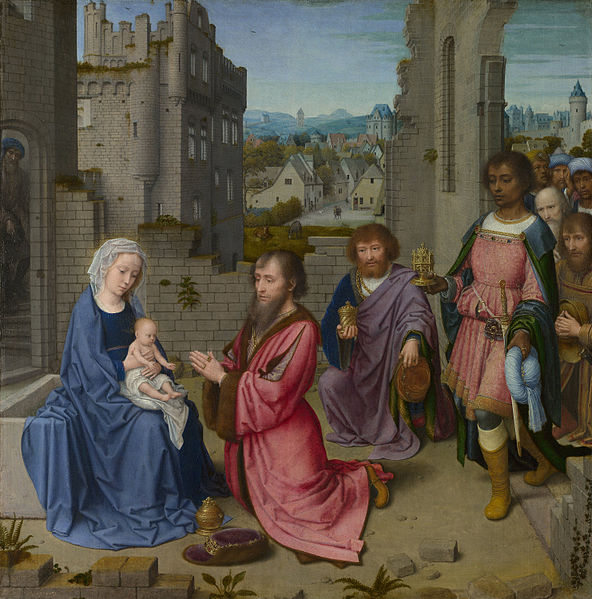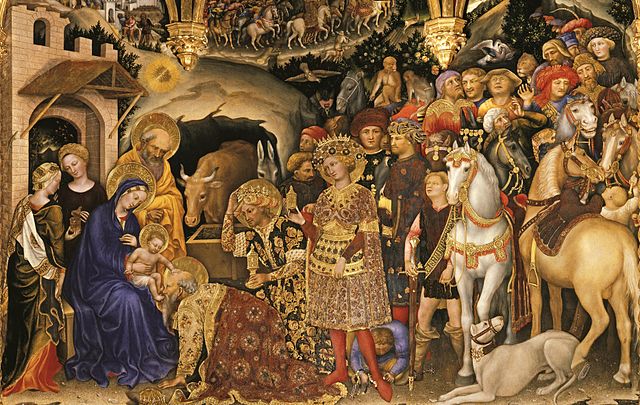The Adoration of the Magi or Adoration of the Kings or Visitation of the Wise Men is the name traditionally given to the subject in the Nativity of Jesus in art in which the three Magi, represented as kings, especially in the West, having found Jesus by following a star, lay before him gifts of gold, frankincense, and myrrh, and worship him. It is related in the Bible by Matthew 2:11: "On entering the house, they saw the child with Mary his mother; and they knelt down and paid him homage. Then, opening their treasure chests, they offered him gifts of gold, frankincense, and myrrh. And having been warned in a dream not to return to Herod, they left for their own country by another path".
Gerard David, Adoration of the Kings, National Gallery, London, circa 1515
Adoration of the Magi, Gentile da Fabriano, 1423
Adoration of the Child Jesus by the three wise men or Magi; Sarcophagus relief (4th century), Vatican
Fra Angelico and Filippo Lippi, mid-15th century
The Nativity of Jesus has been a major subject of Christian art since the 4th century.
Georges de La Tour c. 1644
Master of Vyšší Brod, a Bohemian master, c. 1350. Vyšší Brod (Hohenfurth) cycle. The influence of Italian Byzantine painting was strong in the court of Charles IV.
The stable is just outside the city walls, with the shepherds on the hill behind; Slovakia, c. 1490.
Sant’Apollinare Nuovo, Ravenna, the Magi presenting their gifts (mosaic detail), late 6th century, wearing Persian dress, and Phrygian cap








